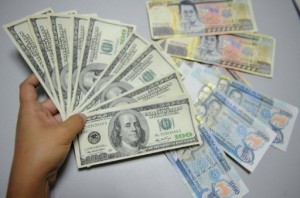Remittances grew 10.6% to $1.78B in November
MANILA, Philippines—Remittances grew at a faster pace in November even though two of the Philippines’ key labor markets—the United States and Europe—continued to be plagued by economic problems.
The accelerated rise in remittances that month was also attributed to the holiday spending in December, which prompted migrant workers to send more money back home.
Monetary officials said the significant rise in remittances should continue to support household consumption—a major growth driver of the domestic economy.
Money sent home by Filipinos abroad amounted to $1.78 billion in November last year, rising by 10.6 percent from the $1.61 billion reported in the same month of 2010.
“Sustained overseas demand for Filipino manpower helped support the flow of remittances during the period, even as the US and many economies in the eurozone continued to face difficult economic conditions,” the Bangko Sentral ng Pilipinas said in a statement.
Article continues after this advertisementData from the BSP showed that remittances in the first 11 months of 2011 amounted to $18.32 billion—7.3-percent higher than the $17.07 billion reported in the same period the previous year.
Article continues after this advertisementThis figure may yet allow the government to achieve its 7-percent growth target for the year, the central bank said.
Remittances came mostly from Filipinos based in the United States, Canada, Saudi Arabia, the United Kingdom, Japan, United Arab Emirates, Singapore, Italy, Germany and Norway.
The central bank expects remittances to continue to grow in the months ahead as job orders for Filipino workers keep coming.
Citing data from the Philippine Overseas Employment Administration (POEA), the BSP said approved job orders for 2011 reached 711,238.
Bulk of the job orders came from employers based in Saudi Arabia, United Arab Emirates, Qatar, Kuwait, Hong Kong and Taiwan.
Over 10 million Filipinos working abroad have been doing their share to fuel consumption of at least 10 percent of Filipino households by sending their earnings back home.
Remittances, a closely watched economic indicator, have also provided a significant boost to the country’s total reserves of foreign currencies.
But some economists have pointed out that the Philippine economy has come to rely greatly on remittances.
